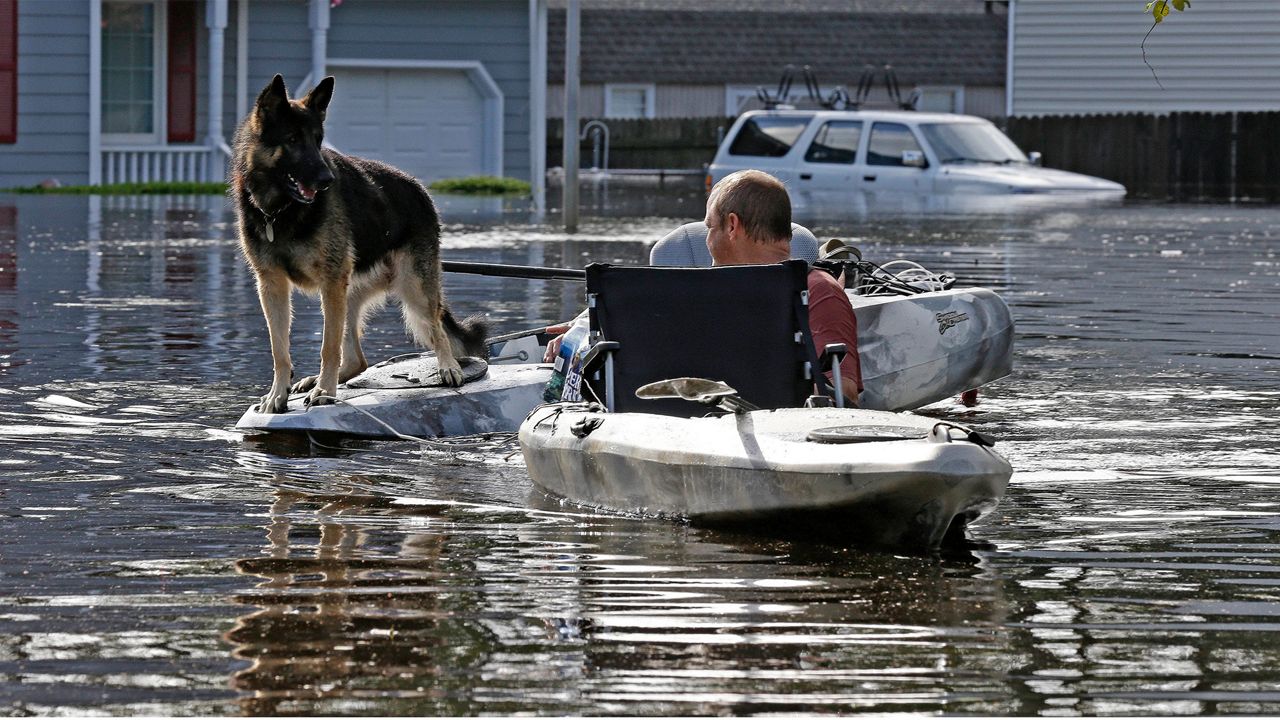NATIONWIDE — As wildfires burn through California and severe weather batters other parts of the country, disaster preparedness is critical — not only for humans but for pets.
A new survey from the American Society for the Prevention of Cruelty to Animals found that 83% of current pet owners live in an area that is susceptible to natural disasters, and more than one in five pet owners has had to evacuate their homes because of a disaster or emergency. But when they did evacuate, almost half of them left at least one pet behind.
Of pet owners who left an animal behind during a disaster evacuation, almost 30% said they did not have enough time when the disaster struck. The ASPCA survey also found that almost 40% of pet-owning evacuees were not able to return to their home for at least four days, exposing left-behind pets to life-threatening hazards including fires, high winds, floodwaters and a lack of access to fresh food and water.
“These alarming survey results demonstrate the vital need for effective preparedness tactics among pet owners, as well as local and national measures that protect vulnerable animals,” ASPCA President and Chief Executive Matt Bershadker said in a statement. “Millions of families rely on their pets for comfort and joy, and pets rely on their owners for safety and shelter. Now is the time to develop and encourage plans that will keep pets safe and families together when disasters strike.”
While more than 90% of pet owners in the survey said they would bring their pet along during an evacuation, only 46% of them had a disaster preparedness plan in place. Eighty-four percent have not secured emergency pet-friendly housing as a backup in case an evacuation site does not allow animals.
The ASPCA recommends the following pet preparedness tips be included in emergency planning:
- When evacuating with your pet, the most important thing you can do is ensure they are safely secured in a pet carrier and that you have handling equipment, including a collar and leash. This will help prevent your pet from escaping and getting lost.
- Make sure all pets are wearing ID tags with up-to-date contact information. The ASPCA also recommends micro-chipping your pet as a more permanent form of identification, should collars or tags become lost.
- Create a portable pet emergency kit with medical records, water, water bowls, pet food and your pet’s medications.
- Choose a designated caregiver, such as a friend or relative outside the evacuation zone, who can take care of your pet in the event you are unable.
- If you know you may be in the line of a disaster, prepare your pet’s crate in advance and even consider crating them early. Not only will this ensure you’re ready to go when you decide to evacuate, but you’ll have an easier time finding your pet and putting them in a crate if they don’t sense the level of urgency that might come with an immediate evacuation.



